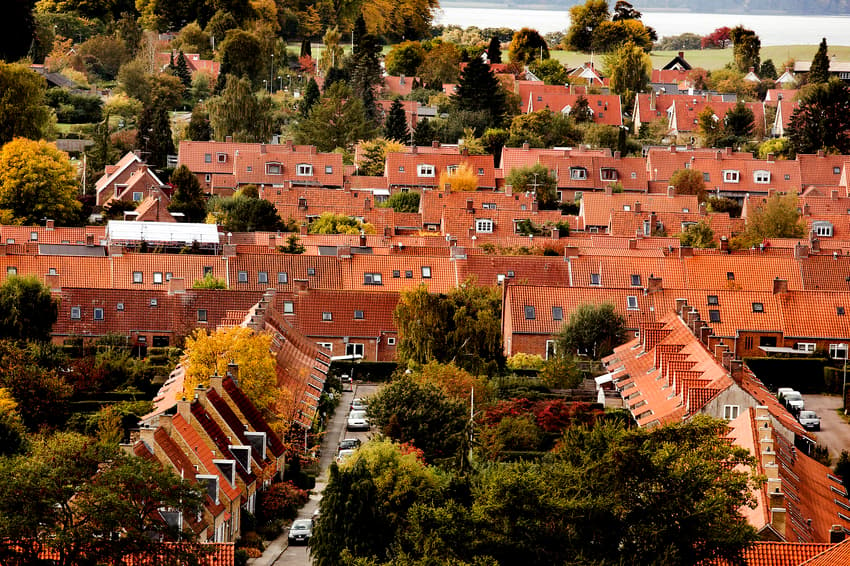Interest rates encourage Danes to restructure mortgages

Large numbers of homeowners in Denmark are aiming to cash in by changing the structure of mortgages, as interest rate trends provide the potential for savings.
Data from financial interest organisation Finans Danmark show that 90 percent of the 23,481 mortgage offers that were made in Denmark in October were related to restructuring of existing loans.
Many homeowners in Denmark are currently able to exploit interest rate trends by clearing their mortgages at lower repayment interest rate than the one they originally took out.
This allows the homeowners to cut part of their outstanding debt by taking out a new mortgage with higher or variable interest, replacing the previous mortgage.
At the beginning of 2022, around 400,000 homeowners had fixed-rate mortgages with interest rates of 2 percent or less and outstanding payments over 1 million kroner.
That number has fallen to 287,000 because of the number of people who have undertaken mortgage restructuring, according to the report.
READ ALSO: Should you buy now if you’re looking for a property in Denmark?
“Because of current interest rates, many homeowners with fixed-rate mortgages can reduce part of their balance by restructuring their loan,” Finans Danmark CEO Ane Arnth Jensen said in a statement on the organisation’s website.
“High interest levels mean that the rate on the underlying obligations falls and that the loans can thereby be cleared at a lower rate than they were taken out at. That can be interesting for many Danish homeowners and we are therefore seeing a high number of offers for loan restructuring or supplementary loans,” he said.
Restructuring loans may not be advantageous for everyone and individual assessments must always be made, Finans Danmark writes.
“Homeowners can switch their current fixed rate loan for a new fixed rate loan with a higher interest rate, or they can switch to a variable rate loan. The variable rate will be lower than the fixed rate here and now but the variable rate can be higher than the fixed rate loan you are coming from,” Jensen said.
“Additionally, there is a risk that the interest can increase and maybe be higher than the fixed rate loan. A higher interest will give higher repayments on the loan and that can hollow out the gains made from the restructuring,” he said.
Comments
See Also
Data from financial interest organisation Finans Danmark show that 90 percent of the 23,481 mortgage offers that were made in Denmark in October were related to restructuring of existing loans.
Many homeowners in Denmark are currently able to exploit interest rate trends by clearing their mortgages at lower repayment interest rate than the one they originally took out.
This allows the homeowners to cut part of their outstanding debt by taking out a new mortgage with higher or variable interest, replacing the previous mortgage.
At the beginning of 2022, around 400,000 homeowners had fixed-rate mortgages with interest rates of 2 percent or less and outstanding payments over 1 million kroner.
That number has fallen to 287,000 because of the number of people who have undertaken mortgage restructuring, according to the report.
READ ALSO: Should you buy now if you’re looking for a property in Denmark?
“Because of current interest rates, many homeowners with fixed-rate mortgages can reduce part of their balance by restructuring their loan,” Finans Danmark CEO Ane Arnth Jensen said in a statement on the organisation’s website.
“High interest levels mean that the rate on the underlying obligations falls and that the loans can thereby be cleared at a lower rate than they were taken out at. That can be interesting for many Danish homeowners and we are therefore seeing a high number of offers for loan restructuring or supplementary loans,” he said.
Restructuring loans may not be advantageous for everyone and individual assessments must always be made, Finans Danmark writes.
“Homeowners can switch their current fixed rate loan for a new fixed rate loan with a higher interest rate, or they can switch to a variable rate loan. The variable rate will be lower than the fixed rate here and now but the variable rate can be higher than the fixed rate loan you are coming from,” Jensen said.
“Additionally, there is a risk that the interest can increase and maybe be higher than the fixed rate loan. A higher interest will give higher repayments on the loan and that can hollow out the gains made from the restructuring,” he said.
Join the conversation in our comments section below. Share your own views and experience and if you have a question or suggestion for our journalists then email us at [email protected].
Please keep comments civil, constructive and on topic – and make sure to read our terms of use before getting involved.
Please log in here to leave a comment.